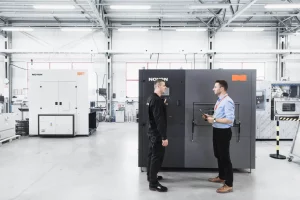One of the most important decisions you’ll make as a forex trader is what lot size to trade. This decision will affect your potential profits and losses and also hinges on your risk appetite. Below, we’ll look at what factors you need to consider when choosing a lot size, and we’ll outline some guidelines for finding the ideal lot size for your trading style.
What is forex trading, and what are its benefits?
Forex trading is the buying and selling of currencies, typically to make a profit. The foreign exchange (forex) market is the largest and most liquid market globally, with a daily turnover of over $5 trillion. It makes it an attractive market for traders, as there are opportunities for big and small profits.
There are many benefits to forex trading:
24-hour market- The forex market is open 24 hours a day, five days a week (Monday to Friday), so you can largely trade whenever it suits you.
High liquidity- A large amount of currency is traded in the forex market, so you can buy and sell with ease and also without affecting the overall market price.
High leverage- Leverage allows you to trade with a smaller amount of capital than is required in other markets. You can make more significant profits, but you’re at greater risk of making losses as well, and these losses can exceed your initial investment.
What is a lot?
A lot is a unit of measurement in forex trading. One ‘lot’ refers to a standard contract size of 100,000 units of the base currency in the spot market. There are also mini-lots (10,000 units) and micro-lots (1,000 units) available as brokers want to accommodate their retail clients by providing more flexibility in trading.
You’ll need to decide the size of the lot you want to trade when you purchase a currency.
What factors should you consider when choosing a lot size?
There are a few factors you need to take into account when deciding on a lot size:
Firstly consider how much money you have in your account. If you have a small account balance, it’s not advisable to trade large lots, increasing your risk of making losses. Conversely, if you have a large account balance, trading mini or micro lots may not give you the total exposure you want to the market.
Another critical factor to consider is your risk tolerance. It refers to how much you’re willing to lose on a trade. If you’re a risk-averse trader, it’s better to trade smaller lots to limit your potential losses. However, if you’re more comfortable taking risks, you may want to trade larger lots to make more significant profits. If you are unsure, you can start small and open bigger positions as you get the hang of trading.
How can you ensure that your lot size is right for you and your trading strategy?
The best way to find out what lot size is right for you is to experiment with different sizes; see https://www.home.saxo/zh-hk/products/forex find out more about demo accounts on which to practise.
Start with small position sizes and see how they affect your trading results. You can gradually increase your position sizes if you’re making consistent profits. However, if you start to experience losses, it may be time to reduce your lot size or pull out of trading altogether.
Another thing you can do is test your trading strategy on a demo account first, and this will give you a good idea of how it performs in the real world and whether or not you’re comfortable with the risks involved.
Once you’ve found a lot size that works for you, stick to it and don’t be tempted to trade larger or smaller positions just because you feel like it. Remember, consistency is key to success in forex trading.
What are some common mistakes people make when choosing a lot size for their trades?
One of the most common mistakes people make when choosing a lot size is based on how much they’re willing to lose rather than on how much currency they expect the price to move.
For example, let’s say you’re willing to risk $100 on a trade. You might be tempted to choose a lot size that would allow you to lose this amount if the trade went against you. However, this is a mistake as it doesn’t consider how much currency you expect the price to move.
If the currency pair you’re trading moves one pip per day, it would take 100 days for your trade to reach its stop loss. Your actual risk could be much greater than $100, as you would have to pay the spread on each day that your trade was open.








